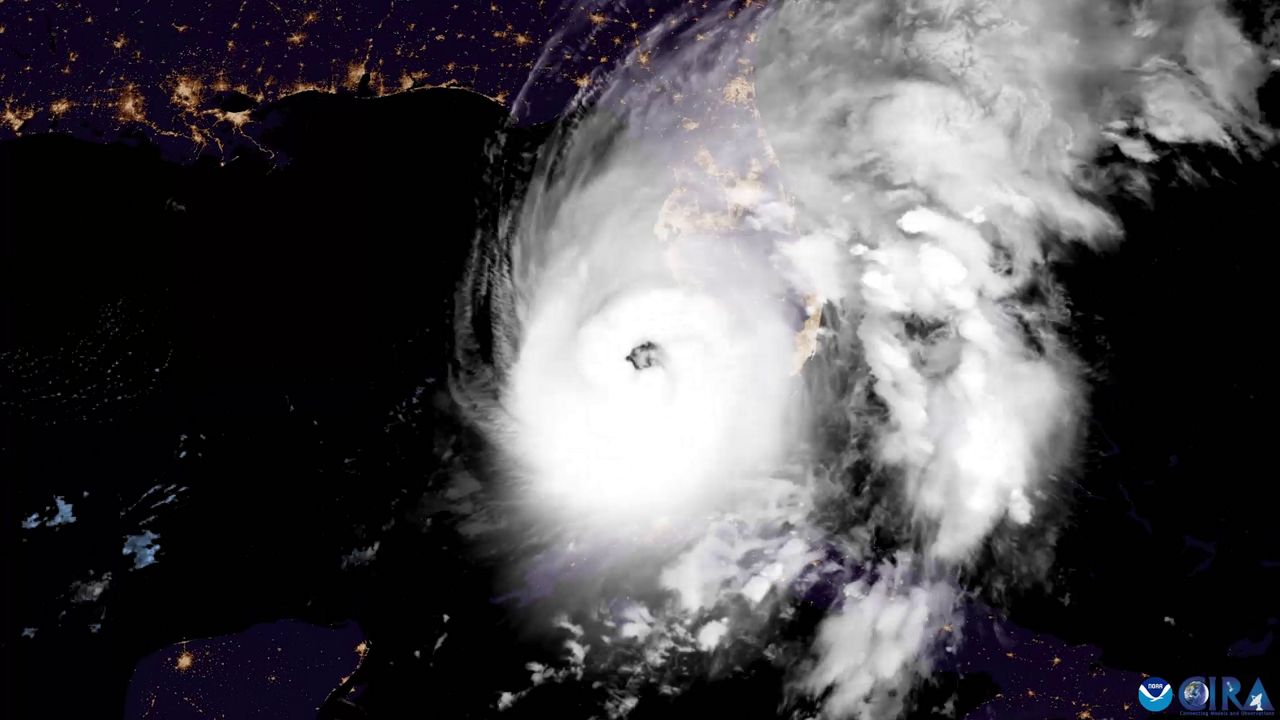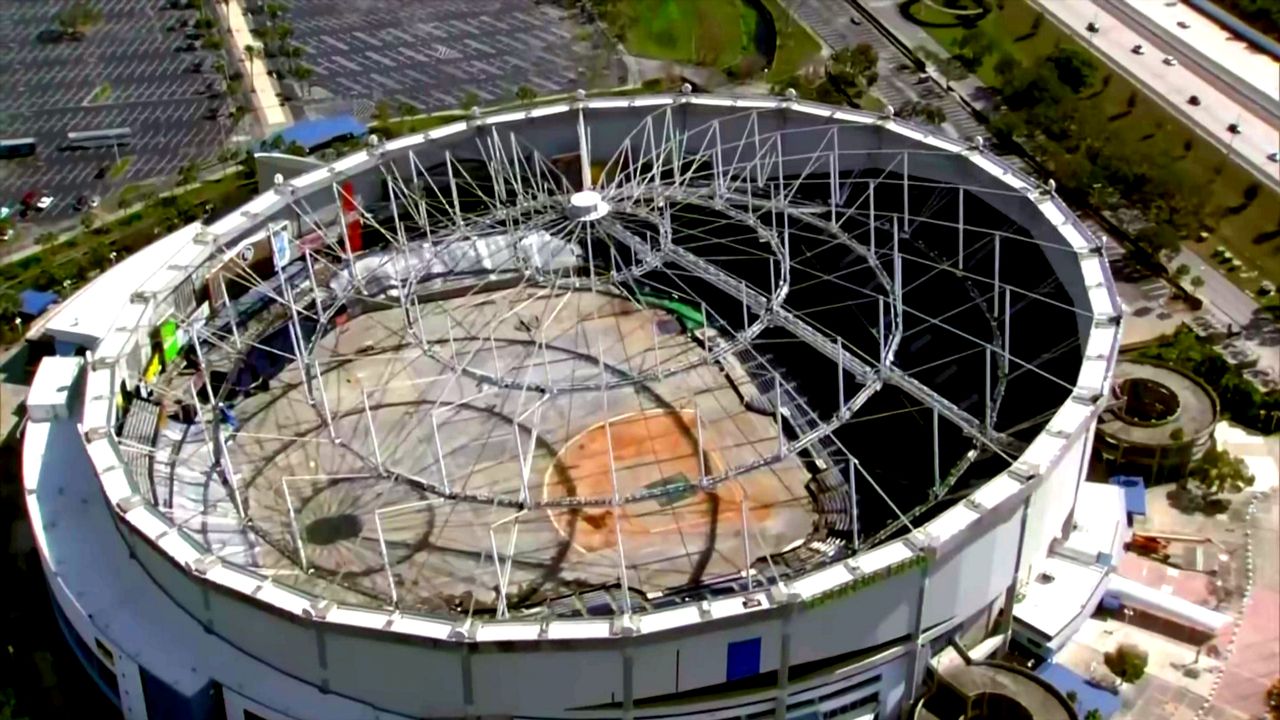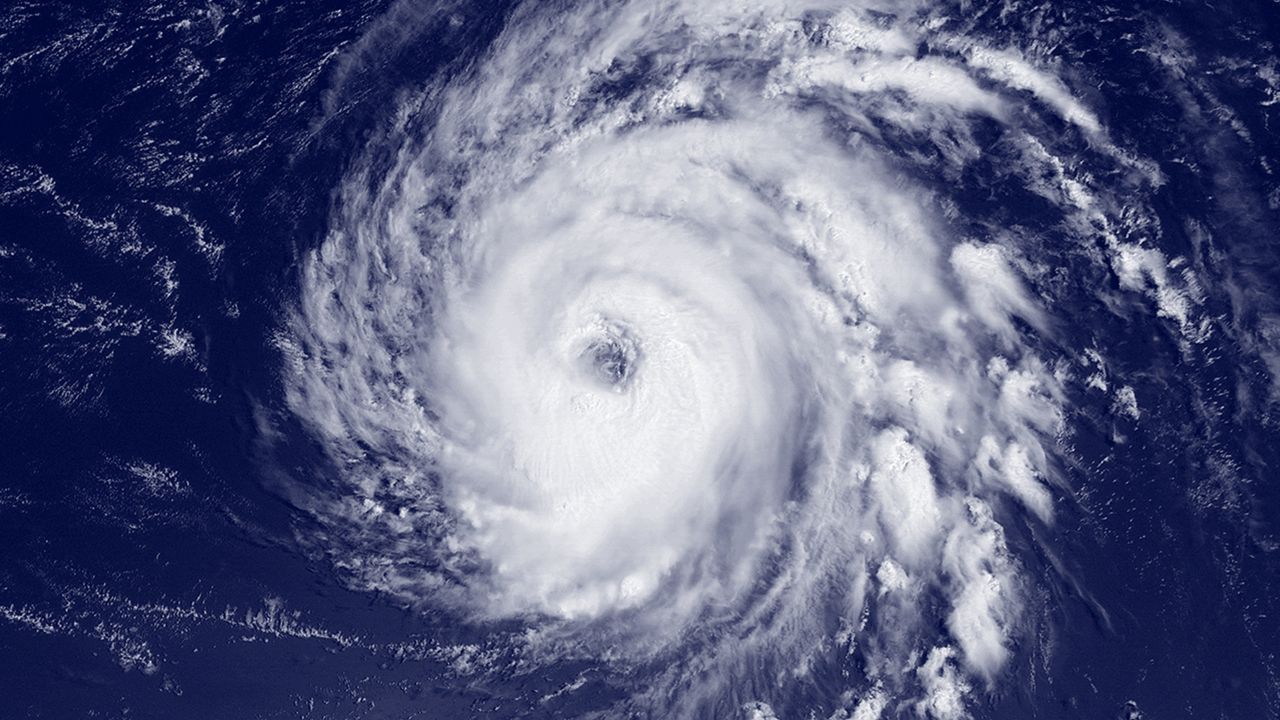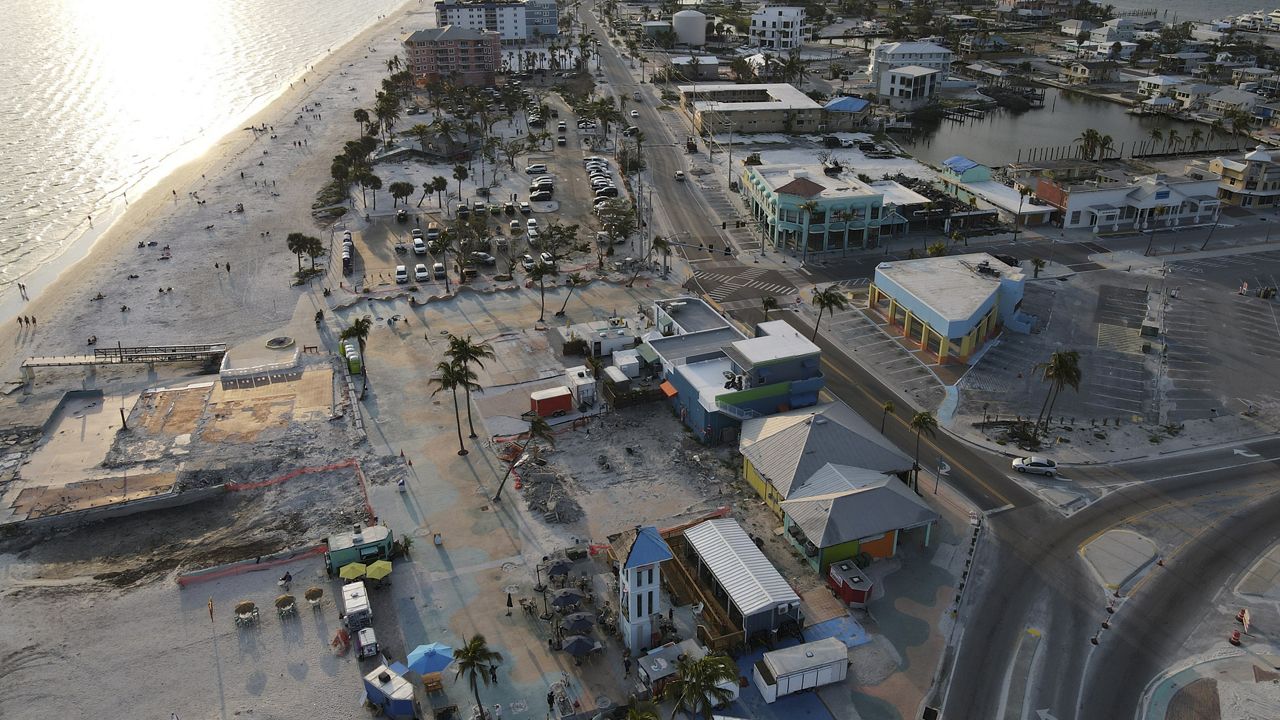It's back, whether you're ready or not. The 2023 Atlantic hurricane season begins in the wake of a destructive 2022. First, Hurricane Ian devastated Fort Myers and flooded swaths of Central Florida. Then, when the season was nearly over, Hurricane Nicole devastated homes and businesses along the Space Coast.
As many affected neighborhoods continue to rebuild, local, state and federal authorities all say now is the time to get ready for whatever may come our way this year.
From supply kits to home insurance, preparing for the Atlantic Hurricane season isn't a one-day project, but it doesn't have to be difficult. Spectrum Bay News 9 has everything you need to know to stay safe.
2023 Atlantic Hurricane Season (June 1 - Nov. 30)
- In this article:
- What to put in your supply kit
- Double check your home insurance
- Physically protecting your home
- Understanding the storm models
- La Niña's effect on hurricane season
- What is storm surge?
- Know your evacuation route
- Preparing hurricane shelters
- Roof requirements
- Building codes
- Fixing power outages
- What to put in your supply kit
- Double check your home insurance
- Physically protecting your home
- Understanding the storm models
- La Niña's effect on hurricane season
- What is storm surge?
- Know your evacuation route
- Preparing hurricane shelters
- Roof requirements
- Building codes
- Fixing power outages
Stocking Up
When a storm approaches, store shelves empty out. So, it's best to buy everything you'll need — and want — to have on hand way ahead of time. You don't want to end up with the leftovers after the canned food aisle has been combed though.
Here's a list of all the basics:
Supply Kit Checklist
- Flashlights and extra bulbs
- Battery-operated radio
- Battery-operated lanterns
- Extra batteries (various sizes)
- Wind-up or battery-powered clock
- Matches
- First aid kit
- Duct tape
- Rain gear
- Plastic garbage bags
- Fire extinguisher
- Scissors
- Can opener
- Clean clothes
- Extra blankets and pillows
- Heavy gloves
- Food
- Bottled water (one gallon/person/day)
- Two coolers (one for drinks, one for food)
- Canned foods
- Bottled juice
- Dry pet food
Tracking Storms
With your home insured and secured, there's nothing left to do but wait to see if a hurricane heads our way.
All of the Sunshine State is a potential target for tropical systems, but not every region gets hit equally.
South Florida's geography, for example — a peninsula jutting into the nexus of the Atlantic, the Caribbean and the Gulf — raises its chances of absorbing a devastating landfall.
But come October, Tampa Bay and the rest of the Gulf Coast tends to find themselves in the crosshairs.
When a tropical system forms, Spectrum Bay News 9 Weather Experts leverage their combined decades of experience and critical information from the National Hurricane Center to forecast storm tracks and development.
That includes interpreting the forecast cone and spaghetti models to determine a storm's potential path and projected intensity.
It's always important to note, storms can change directions quickly, and their strength is infamously difficult to predict.
Every year, we adapt and change to better forecast storms. One way this year is through tropical outlooks.
El Niño and La Niña — they're terms everyone living in Florida for at least a few years has heard during hurricane season.
But, not everyone knows what they are or what they do.
Basically, they're big weather patterns that can have a major impact on storms making the long trek across the Atlantic or firing up in the Caribbean.
The National Oceanic and Atmospheric Administration (NOAA) is predicting that El Niño is on its way this summer.
Storm Surge
Each year, we warn about storm surge — and Hurricane Ian showed us why.
Storm surge is the abnormal rise of water above the predicted tides due to the strong winds of a storm. There can be large waves on top of the rising water, increasing the damage.
Historically, about half of all hurricane-related deaths are due to storm surge.
The risk of a storm surge depends on the storm’s size and intensity and how fast it’s moving. Other factors include the shape of the coastline, the hurricane’s angle of approach to the coast and how deep the water is offshore.
For the west coast of Florida and Tampa Bay, it is shallow, which contributes to a higher risk compared to the east coast of our state. Water can rise fast and move far inland. You need to get out before it’s too late.
Areas outside of the cone can also experience a storm surge, depending on the hurricane’s location.
Protecting Your Home
When the National Hurricane Center forecasts a storm will hit the Bay area, it's not a good time to find out your most expensive possession isn't protected. Contact your insurance company before an emergency to make sure you are covered if a storm strikes.
Home Insurance Claim Checklist
- Have your policy number available
- Contact your insurance company as soon as possible
- Make a list of damages and document with photos
- Fill out and return all claims forms promptly
- Ask questions if you don't understand the process
With recent storms bringing massive flooding events to places like Fort Lauderdale last month, officials say that flood insurance is crucial for Floridians, even if they don’t live in a zone that requires it.
Mark Friedlander, Florida spokesperson for the Insurance Information Institute, says with the way Florida is geographically laid out, no one is safe from major flooding events.
While it's not just the coastline that can flood, inland flooding is a major concern for many Florida residents.
When Irma came through the area in September 2017, the Anclote River, which runs nearly 30 miles into Pasco County, flooded over. The community of Elfers was quickly underwater, and the county needed volunteers to step up.
It was one of the worst incidents of flooding that Elfers had ever seen. But far from the only.
As more and more people continue to move to the Sunshine State year in and year out, new homeowners and renters are looking for their piece of Florida.
But the true cost of owning or renting a home in this state has largely remained unknown.
A team of researchers at the University of Central Florida is aiming to fix that with a tool they created called HazardAware, a free website anyone can access that lets users type in any residential address across all 67 counties in Florida and access their home’s HazardReady score.
Protecting your home and its contents is more than just a financial exercise. It's physical. Before a tropical storm or hurricane storms across Tampa Bay, homowners should take several simple steps.
Checklist for Securing Your Home
- Remove outdoor items
- Trim dead branches from trees
- Install shutters or board up windows
- Fill gas tanks and extra containers
- Withdraw extra cash
- Move furniture away from windows
- Store important documents and valuables in waterproof containers
Roof Requirements
One of the many types of damage that could happen to your property is roof damage. For our roofs, it’s not only the water we have to worry about — it’s the wind. It can rip off shingles, tiles or metal during a storm.
In the past decades, there have been a lot of advancements and changes in roof repairs.
Getting Out
In the event of an approaching tropical storm or hurricane, officials issue evacuation orders for coastal areas, low-lying neighborhoods and mobile home communities.
Traffic can back up quickly, especially on the bridges, so it's important to know your evacuation route before a storm bears down on Tampa Bay.
Pinellas County Emergency Management officials discuss what it takes to evacuate a county.
Hunkering Down
Counties open storm shelters for evacuated residents who who are unable or unwilling to leave town, but emergency management officials say shelters should be treated as a last resort.
Specific shelters are set up for people with special needs. It's important to pre-register with the state.
Not all shelters accept pets, so pet owners need to make additional preparations.
Protecting the Vulnerable
When it comes to evacuations, it’s not so simple for more vulnerable residents. Bryan Scanlon, the Director of Facilities Management at HCA Florida Pasadena Hospital, says the hospital’s biggest threat during a hurricane is tidal surge and high winds because of its proximity to the Bay and Gulf of Mexico.
Scanlon says planning for storm season is a collaborative effort between the hospital, city, county, emergency management services and other medical facilities that may have to evacuate. He added that detailed planning and preparation are key for the hospital to be effective during and after the storm.
Building Codes
With images of the destruction Hurricane Ian left in Fort Myers Beach still fresh on everyone’s minds, Maderia Beach building official Frank Desantis says how well something like a building or a boardwalk holds up in a storm like that depends on when it was built
John’s Pass has some of the lowest base flood elevation on Pinellas County’s barrier island, at just three and a half feet above sea level.
But 1992 is the year everything changed when it comes to building safety. After Hurricane Andrew caused billions of dollars in damage, the ball started rolling on the first statewide building codes. Those first took effect in 2002.
However, building codes only apply to new construction. That means, should a big storm hit John’s Pass, it can’t be rebuilt the same way it looks today.
Building codes are updated every three years — so lessons from the latest natural disasters can impact future builds. And 2023 is one of those years.
Restoring Electricity
Tropicals systems mean power outages — the more powerful the storm, the more widespread the interruption usually is.
Local crews work around the clock to repair the power grid as quickly as possible, enlisting help from other parts of Florida and across the country, if needed.
Check outage maps and see estimated repair times here when the lights go out.
Of course, rapid power restoration doesn't happen without extensive and repeated training. Local lineman know their job offers no margin for error, and mistakes are often deadly. They learn how to have each others' backs while training to safely turn Central Florida's power back on after a storm.
Revisiting Fort Myers Beach After Ian
Hurricane Ian was headed for Tampa Bay — but a shift in the track spared us. However, Fort Myers Beach saw catastrophic damage. Here is how they are recovering.








